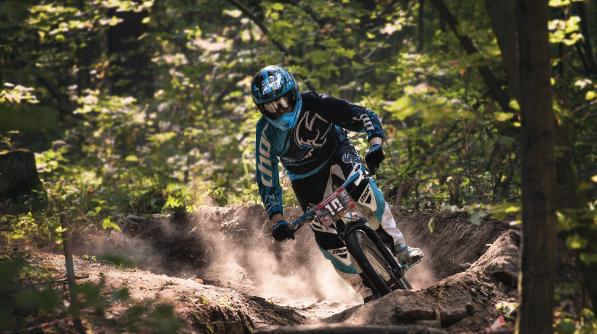Mountain biking is a thrilling sport, which is why it attracts such diverse fans as the rugby star, Nicolai Geometron, the rock star Duff McKagan, and even, somewhat surprisingly, former president Bush. There is nothing quite like the thrill of going down a new trail, but there are a few points every mountain biker should keep in mind before exploring new sites.
Let’s discuss the important details to keep in mind before exploring new trails.
1. Trail Difficulty
Like ay sport, there is always a risk of injury when mountain biking, but some trails are harder and more dangerous than others. The difficulty level of a trail depends on how rough the terrain is, how many plants or other obstructions are in the trail and how much room it leaves for errors.
The difficulty of the trail should determine how bikers ride it, since they can manage the risk through riding behavior. Simply slowing down and carefully watching for hazards can make a dangerous trail manageable. It’s also worth going along with someone who has already been down the trail and knows the rough spots. There are some trails that are simply too hard for some riders, but don’t let that thought discourage you; there are always easier trails out there and you can train up for the more difficult ones.
2. Safety
Safety should always come first, especially on a new trail. A biker’s inexperience with the area introduces new risk factors, and taking steps to manage those risks is essential.
No biker should ever go on a new trail without a way to call for help. Remember that not all trails will have a cell signal. A signal whistle of similar tool is necessary as a backup, or for trails without reception. It’s also important to bring a map, since it’s easy to get lost a new trail if it ever splits or turns. Most importantly, bikers should inform a few different people where they are headed for the day so those people can get help if the biker fails to get home on time.
3. Weather
All bikers should check the weather report before they head out for a trip, especially if they intend to spend a long time on a new trail. Bad weather brings reduced visibility and poor trail conditions, so it’s even worse for people who are on a new trail than those who are on an old one.
Most trips down a new trail will be fairly long, so it’s important to look up a detailed forecast in case the weather is going to change part way through the trip. Hourly forecasts that are released on the day of the trip will be the most accurate. They’re also the most useful, since they can provide a specific range of time when the weather is likely to be good.
4. Physical Limits
Every mountain biker knows that biking is an intensely physical sport that takes a lot of energy. The ACSM Health and Fitness Journal found that the challenges of biking over uneven terrain lead to a full-body workout that also trains coordination and good decision-making skills. That physicality also means that bikers need to take their endurance and physical limits into account when picking trails. Biking down a trail that is too long or difficult means turning around early, and nobody enjoys that.
The biggest factors to consider are the length of the trail and how many slopes it features. It’s important to remember that any trail which isn’t a loop also includes the journey back to the starting point, which doubles the workload to bike it. Biking back is unavoidable, even for people who get tired and stop early, so planning for it is vital.
Bikers who aren’t sure if they can handle a trail should train their endurance before they try it. The best way to do that is to start out on smaller and easier trails. That’s also the best way to discover limits, so it’s a good idea to start small and build towards bigger challenges.
5. Bike Design
Mountain bikes come in a lot of different shapes and sizes, and bikers should make sure that their bike is suitable for the trail. The bike’s suspension is usually the most important factor. Some mountain bikes, like cross-country models, are fine for relatively smooth trails but can’t handle extremely rough terrain. Using them on a rough trail is an exercise in discomfort, so it’s best to check for compatibility before heading out.
The bike’s weight will also matter on some trails. Some of them include serious obstructions, such as shallow water or fallen trees. Bikers sometimes need to carry their bikes over or through those obstacles. That’s much easier with a light bike than a heavy one. These obstructions are rare, so it’s usually easy to find out if a trail will feature them in advance.
Preparation Counts!
While it seems fun to just “wing it” and embrace the adventure, a little preparation goes a long way – and you’ll still be in for plenty of unexpected delights on the trail. That’s the beauty of mt. biking.
There is always some risk for a mountain biker when exploring new trails. Most problems arise from carelessness, when people don’t stop to think about whether they can handle the trail. Researching the trail and preparing for its challenges does take some effort, but the reward is a safe and pleasant outing.
There you have it! Cross every point off your list and… what are you waiting for? Your trail adventure is out there!

